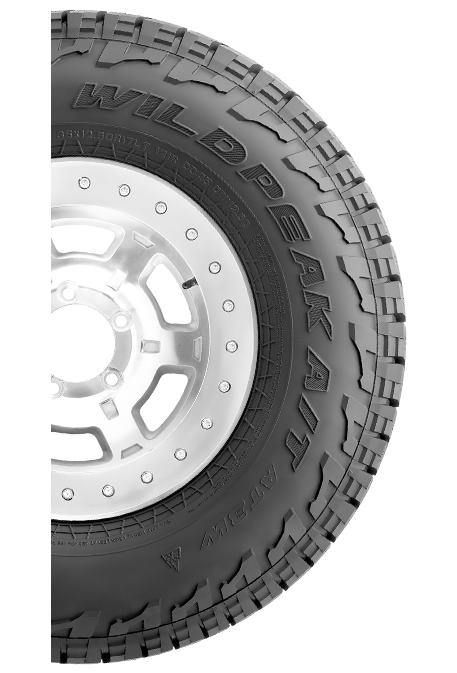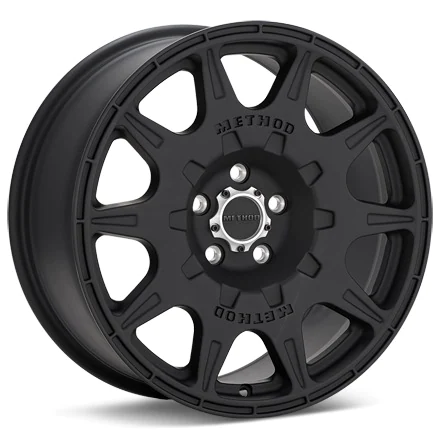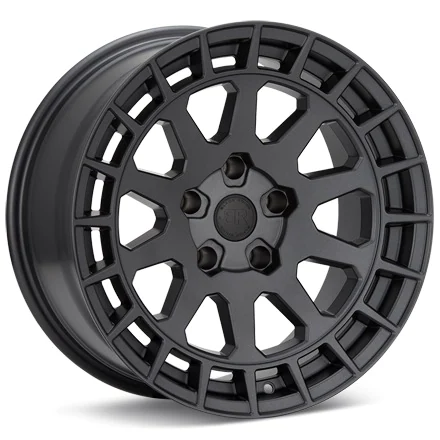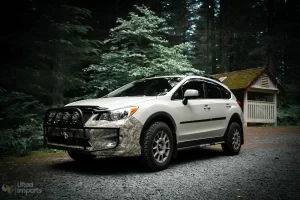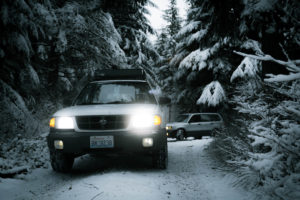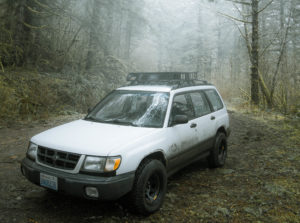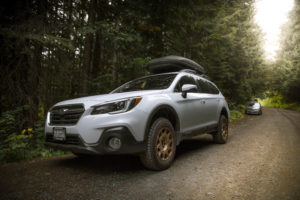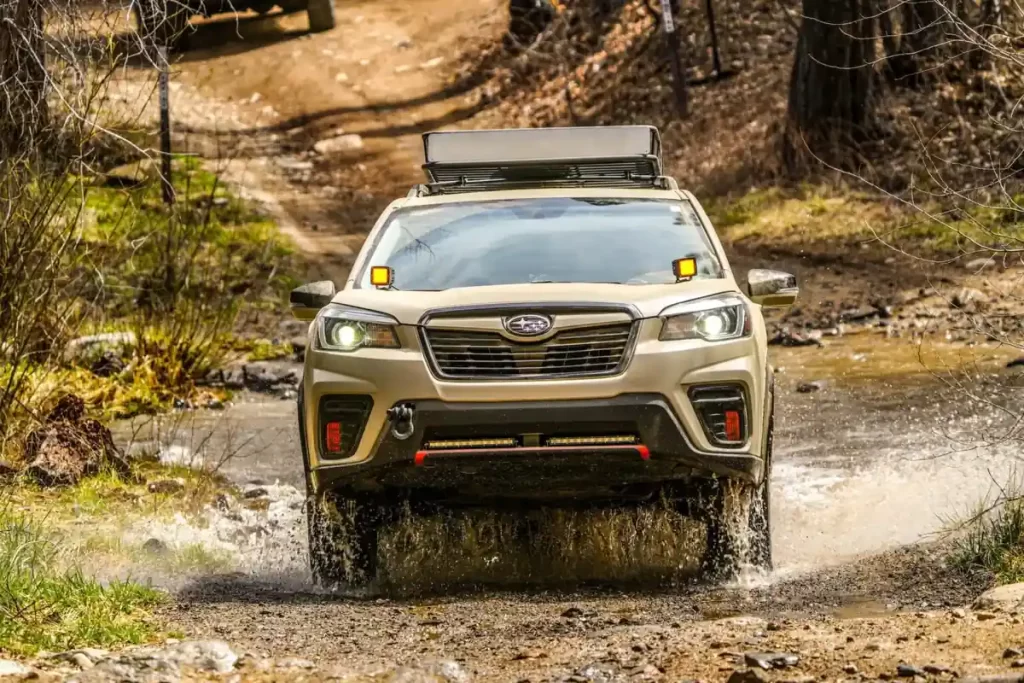
With A Little Work, You Can Put Bigger Tires On Your Subaru Forester And Hit The Trails
By Ben Boxer
Last updated on March 20th, 2024
A set of all-terrain or mud-terrain tires is one of the best upgrades for a vehicle to improve its off-road performance. Both of these tire types have a stronger and more durable construction, and they can help vehicles navigate through challenging terrain. Most truck and Jeep owners love them, and if you want to add some aggression to your Subaru Forester, you can follow suit!
In this article, we’ll talk about the various factors that you should consider when it comes to choosing a set of AT or MT tires. While there are plenty of options for stock sizing, some people prefer to go a little bigger when it comes to their tires. We’ll talk about the modifications that you’ll need to make to accommodate a larger tire if you decide this is the right option for you.
Table of Contents
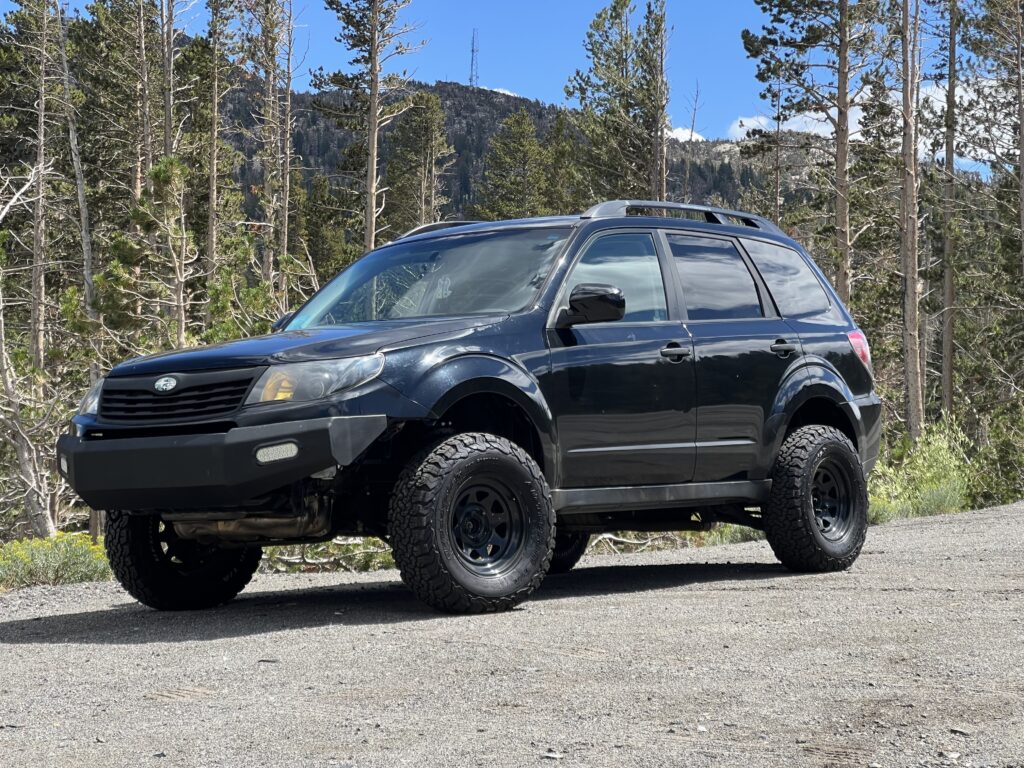
Why Put Off-Road Tires On A Subaru?
One of the biggest advantages of mud-terrain or all-terrain tires is their grip. They are made with more pronounced “lugs” that allow them to hold onto slippery surfaces better than smooth tread all-season tires. Whether you’re on ice, sand, mud, or dirt, an off-road tire will dig in better than the stock tire that came with your Subaru. Durability is another thing to keep in mind when tire shopping. Not just the tread life, but the ability of the tire to take a beating from sharp objects without being punctured. I’ve helped multiple on the trail who got flat tires just from driving on gravel roads with their stock all-seasons. A solid all-terrain or mud-terrain will be able to handle those same roads with no issue. I’ve never gotten a flat from rocks or sharp pieces of wood on the trail while using AT and MT tires despite beating on them pretty hard.
AT and MT tires also have a much thicker sidewall that can handle being aired down. Letting air pressure out of tires increases the length and width of the contact patch improving the overall grip. For rocks, sand, and snow, dropping your tire pressure down to around 15psi can be a night and day difference. I’ve been on many sand and snow wheeling trips where I got stuck every 20 feet even at about half my regular tire pressure. After going down even further to about 8psi, I was able to drive without any issues. If you try airing down a regular street tire, you may blow out the sidewall. They’re not made for it and the sidewall can’t handle the added stress of being “flexed.” As it flexes, it will heat up and likely come apart.
Of course, you need to take precautions when airing down. I recommend learning how to reseat a bead before letting out all that air. I also think it’s wise to experiment with different tire pressures to find the right number for your specific tire in various types of terrain. If you plan to air down, don’t forget to purchase a simple air compressor as well as basic tire necessities. Things like extra valve stems and tire plugs are a must if you’re going to be altering your air pressure and beating on your car. Check out my guide for airing down your tires to learn some of the tips I use.
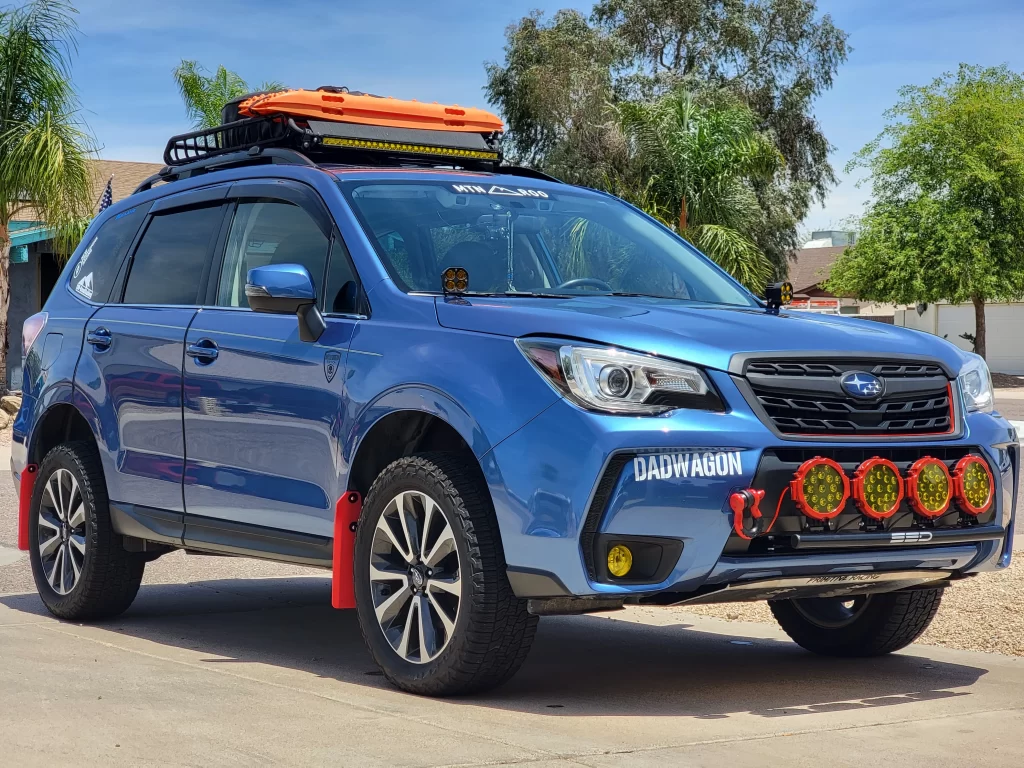
Possible Downsides of Using Off-Road Tires
Although aggressive tires are well-documented for their benefits, they can also have some negative effects on a Subaru. Before installing them, it’s important to keep in mind that they can have various drawbacks. Some of these drawbacks include reduced fuel economy, road noise, and higher cost when compared to stock tires.
An aggressive tire will be heavier by nature due to its thick body, large lugs, and thick sidewall. This is great for durability and grip. However, it’s also what makes them harder for your vehicle’s transmission and engine to rotate. This means that you’ll experience slower power delivery and reduced fuel economy.
The amount of power and fuel economy loss can vary a bit depending on your choice of tires and wheels. After I replaced my Subaru’s stock tires with mud terrains, I only lost about 1-2 miles per gallon. But remember that most people don’t simply install just bigger tires without adding other things. Another factor that can affect your vehicle’s fuel economy is the installation of a lift kit or heavy objects on the roof. Things like rooftop tents and roof racks can create a lot of drag. Doing any of this at the same time as your tire install can create the notion that your tires were involved in a dramatic loss of MPG.
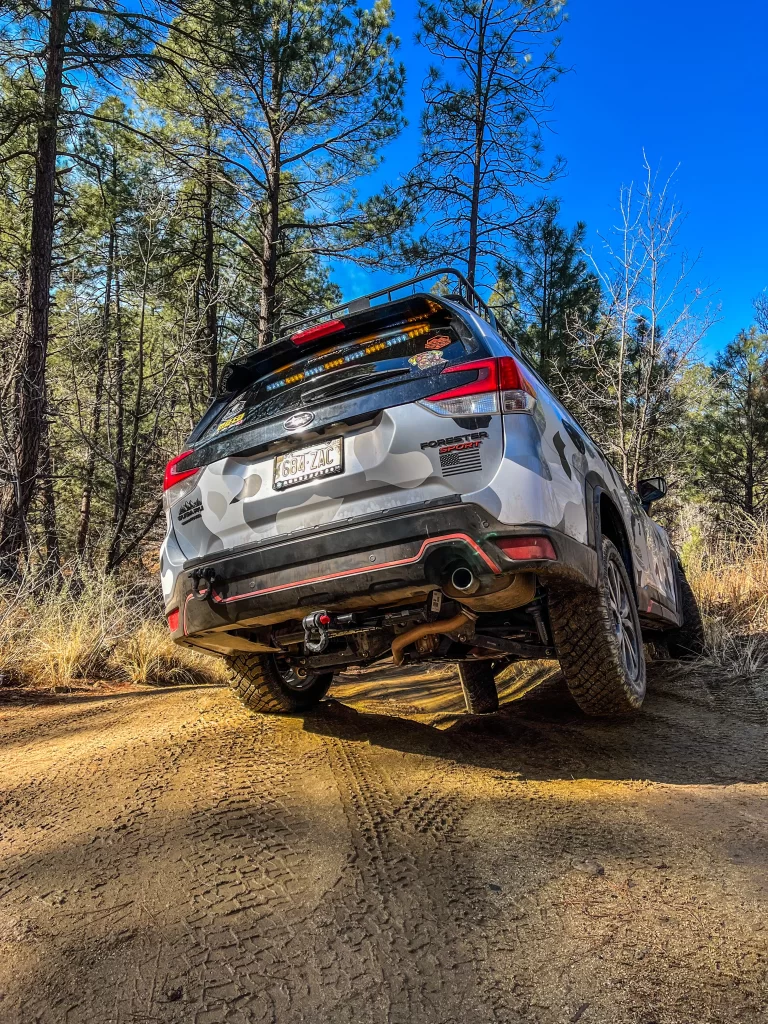
Another thing to be mindful of when upgrading to off-road tires is road noise. It is simply a part of owning a vehicle with aggressive tires. If you are sensitive to it, avoid mud-terrains and stick with mild all-terrains. Although I don’t mind the noise, some people might dislike it enough to want to steer clear of aggressive tires. I appreciate the extra performance that these tires provide. Even though sound dampening has advanced, getting something too aggressive for use on a regular basis may be less enjoyable for some drivers. Take this into consideration as you choose between mud tires and all-terrains.
Another possible downside of upgrading tires is that they can sometimes require modifying your vehicle in order to fit them if you plan to use an overly large size. If you stick with a stock size, fitment shouldn’t be an issue. However, if you’re like me and do things on the more extreme end, you may want to increase the overall diameter of your tire substantially. With the more aggressive tread and thicker carcass, off-road tires are already a tighter fit. But then when you size up, it amplifies that issue dramatically. Be ready to do some small modifications if you want to go bigger.
Installing Off-Road Tires: Best Practices
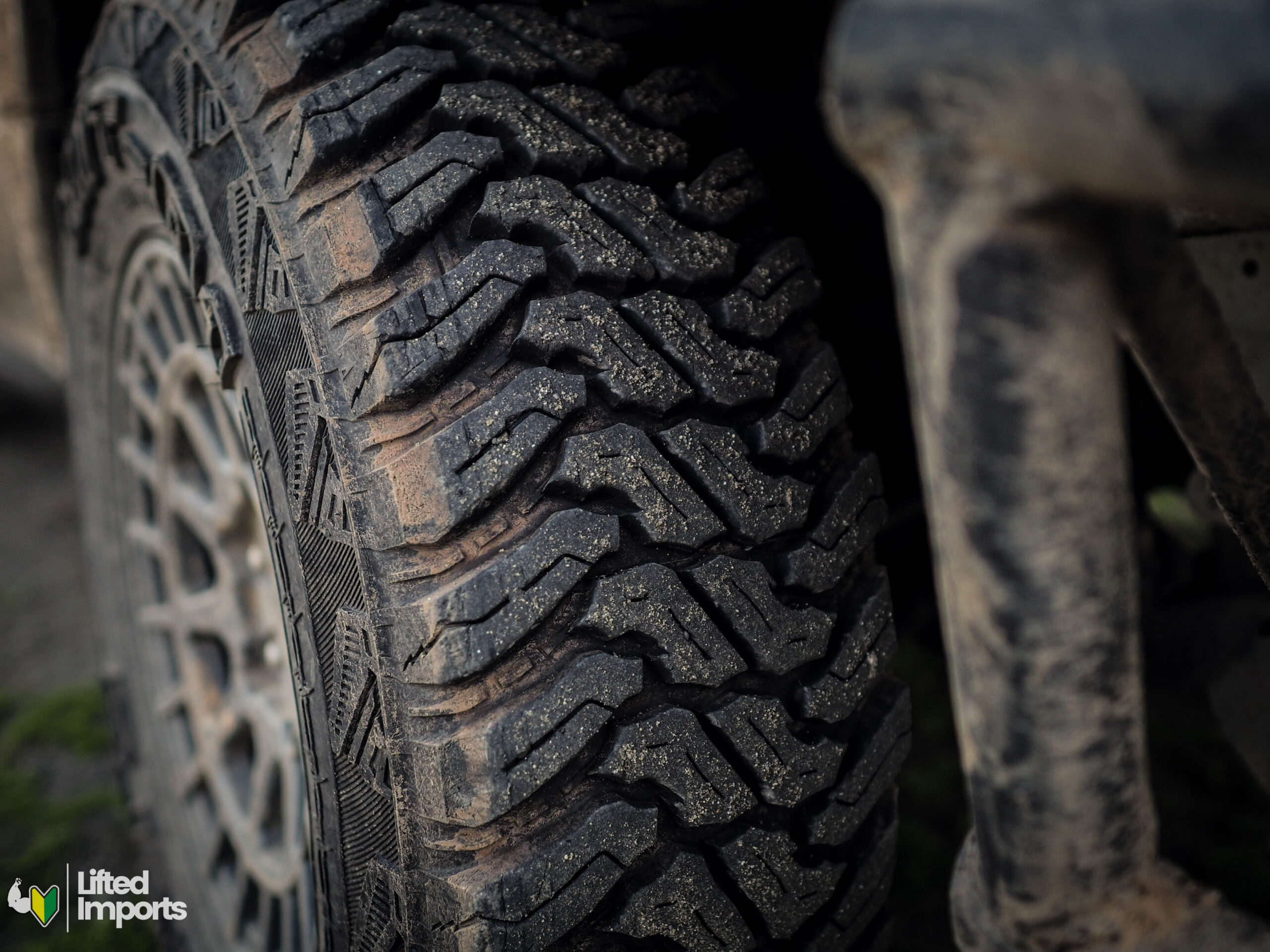
Choose Your Tire Size That Matches Your Needs
Some of us like to do things to the extreme when we modify our cars. Other people simply want to improve function. If you’re planning to stick with the stock size that came with your Forester, there isn’t much you’ll need to do in order to install an off-road tire. There are some great tires available in the stock Forester sizes that you can simply have installed on your factory wheels. However, if you want to size up to a bigger tire, there are some modifications you’ll need to do.
If you own a newer Forester, it likely came with a 225/60R17 or a 225/60R18 depending on trim level. If you want to go bigger than that, we recommend only going about 1 inch larger than the stock overall diameter and not exceeding more than a 2 inch increase. 235/65R17 is a really popular size for newer model lifted Foresters that falls right in between the two extremes. It adds roughly 1.5 inches of overall diameter. You may also want to put a bigger tire on a completely stock Forester. A 225/65R17 can usually be installed on most newer Foresters without doing any modification. But if you plan to go with a bigger tire that’s closer to the 2 inch mark, you’ll likely need to install a lift kit, use a heat gun to massage your fender liners out of the way, and replace your mud flaps with a thinner aftermarket option. Side note: most people will say “you don’t need a lift to run bigger tires.” And yes, that is true. However, a lift will help keep your tires from contacting your fenders during full suspension compression.
If you want to see some of my favorite lift kit options that are available for Foresters, check out this article that I wrote that only includes good quality choices: “Best Forester Lift Kits”
Select Something Light Enough For Your Forester To Handle
A huge consideration that needs to be made when choosing your next tire is the weight of your tire and wheel combination. We recommend sticking with a P-metric tire and avoiding LT tires when selecting a tire for Subarus. LT (light truck) tires are typically much heavier and are made for heavy trucks to handle towing and other serious demands. But with our vehicles, there’s not much of a need for this since they’re not heavy cars. Sticking with a P rated tire will usually save you money and won’t bog down your Forester.
The Falken Wildpeak AT3W is a great example that we use regularly of an all-terrain tire that is available in both LT and P-metric ratings. When compared side by side in 265/65R18, this tire weighs 56lbs in the LT version but only 44lbs in the P-metric option. Not only is it lighter, but it costs $144 less per set. If you’re upgrading your Forester’s tires, we definitely recommend finding the lightest option to help offset any power and fuel economy losses.
We really appreciate how the AT3W can do it all. It does great on the pavement, isn’t overly loud on the freeway when compared to most AT tires, and can hammer almost all types of off-road terrain with no problem. They are even 3 peak mountain snowflake rated which means they won’t harden up in the cold weather like some tires.
Please note that the Wildpeak AT3W is not the same as the Wildpeak AT Trail. They’re both great tires, but the AT Trail is much lighter duty and is mainly intended for folks who do mostly pavement driving with occasional gravel road usage.
There are many more great tire options that also work with lifted Subarus. If you’d like to see some of my favorites, you’re welcome to check out this article: “Best Off-Road Tires For Subarus”
Check Falken prices online:

Purchase a Wheel That Compliments Your Tire Choice
If you’re planning to stick with your stock wheels, you can upgrade to an off-road tire. But you’ll want to stay close to stock diameter since you can run into clearance issues with your suspension as previously mentioned. If you go too big on stock wheels, you may have issues with the tire contacting the front strut perches and especially the rear perches on older models. For this reason, we recommend not going much more than a half inch in overall diameter bigger than 235/65R17 or 235/60R18, which have an overall diameter of roughly 29 inches, on OEM wheels. People have reported running these sizes on their SJ Forester with very little to no rubbing on their stock wheels.
If you want to go bigger than a 29 inch tire, we suggest a lift kit and going with a rally style wheel like a Method, Motegi, Black Rhino, or another wheel that has a more aggressive offset to help avoid clearance problems with the struts. Wheel offset is a measurement of how far away the wheel sits from the hub. We typically look for something with at least a +40mm offset when installing aggressive tires (note that the lower the number, the further the wheel sticks out.) Rally wheels also have a high-clearance barrel design that allows for bigger brake accommodation than OEM wheels. So if your plan is to size down to a 15, 16, or 17 (depending on your stock brake setup) a good aftermarket wheel should help a lot. We recommend taking measurements before making a final purchase decision. It’s a good idea to measure your brake clearance and clearance from the spring perches.
One thing to keep in mind when installing a wheel that sticks out further is that while they will keep your tire from rubbing on spring perches, they may cause your tires to contact the fender liners in the front. This can usually be remedied by using a heat gun to gently massage the liners out of the way. But this is much better than having suspension clearance problems.
Popular Off-Road Wheels For Subaru Foresters
Be Prepared to Make Modifications To Fit Bigger Aggressive Tires
There are two types of people in the off-road world: people who want to casually drive trails and not make permanent mods to their car, and then people who do not care to cut, hammer, and trim anything in the way of fitting larger tires.
If you’re the type of person who only wants to minimally modify their Forester, we suggest sticking with a mild tire size upgrade that’s not much more than an inch larger in diameter. This will keep you from running into any issues that require cutting. The only modifications you’ll need to consider are aftermarket mud flaps, and possibly using a heat gun to massage your fender liners out of the way since your tires may rub at full lock.
Now if you’re more adventurous like us, you might want to jump up to something like a 30-30.5 inch tire. Doing this is not recommended and we are hesitant to even explain how to do it. But if you really don’t care about your car’s appearance or resale value, it can be done. You’ll probably have to cut your sideskirts, make modifications to your bumpers, and do lots of massaging with a heat gun or blow torch. In some cases, it may even be required to use a hammer to fold the fender pinch welds out of the way. We don’t have to tell you that at this point, any normal person would just buy a 4×4. But that’s not why you’re here. You’re here to off-road in your Forester.
Making The Choice Between All-Terrain & Mud-Terrain Tires
There is no hard and fast rule for this. However, I have a very simple formula that I use when I’m picking tires for a lifted Subaru. If the car in question is going to be used 20-40% off-road, we suggest an all-terrain tire. If you’re going to drive it 50% or more on trails, then we recommend a mud-terrain. Again, this is all dependent on personal preference. But we think this formula works well and makes a lot of sense as a great starting place. If you fall outside or in between those percentages, feel free to use your own discretion when choosing between AT and MT tires. For example, if you only drive your car off-road 10% of the time but the trails you do specifically require the extra traction of a mud terrain – get a mud terrain. Conversely, if you drive off-road more than 50% but the trails are very mild, then an AT could still be perfect for your needs.
Related: Everything you need to know about different tire types
At the end of the day, each individual has to weigh the pros and cons of upgrading to an off-road tire. But we hope this article gives you more confidence as you move towards that decision. As always, we suggest working with a trusted mechanic when performing modifications to any car. Please remember that the content of this article is for educational purposes only and we are not liable for any negative outcome someone may experience after modifying their vehicle.
We hope to see you out on the trails!
Other Articles You May My Find Helpful For Your Forester:

